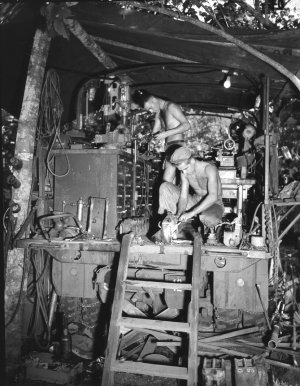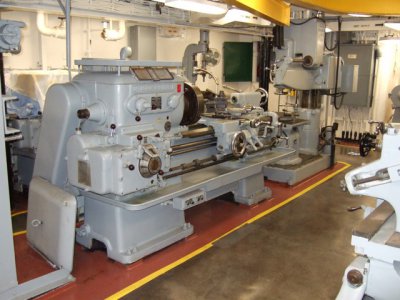-
Welcome back Guest! Did you know you can mentor other members here at H-M? If not, please check out our Relaunch of Hobby Machinist Mentoring Program!
You are using an out of date browser. It may not display this or other websites correctly.
You should upgrade or use an alternative browser.
You should upgrade or use an alternative browser.
Mobile Army Machine Shop- then and today
- Thread starter HMF
- Start date
- Joined
- Apr 20, 2011
- Messages
- 430
That sure looks like a fine set-up -- have to wonder what "we" paid for it. And the sad part is, in 3-4-5 years (if that long), it'll be shuttled off in some corner of a base and left with a door or window open, uncovered, and sit there to be auctioned off in 15-20 years after the electrics are ruined and totally out of date, and everything else rusty and dusty.
- Joined
- Jan 22, 2011
- Messages
- 8,032
Impractical. Does the government actually own any of these, or is that from a prototype or sales pitch?
Pacer link=topic=2576.msg17505#msg17505 date=1309091176 said:That sure looks like a fine set-up -- have to wonder what "we" paid for it. And the sad part is, in 3-4-5 years (if that long), it'll be shuttled off in some corner of a base and left with a door or window open, uncovered, and sit there to be auctioned off in 15-20 years after the electrics are ruined and totally out of date, and everything else rusty and dusty.
Pacer, I think you have it right -- but not just for the military. I just bought a Mitutoyo CMM (coordinate measuring machine) off the surplus list from SLAC (Stanford Linear Accelerator Center -- a research facility funded by your tax dollars and mine
I'm still optimistic that I'll be able to recover it to a level useful for an HSM (i.e., some semblance of its former accuracy).
Mike
Last edited by a moderator:
Last edited by a moderator:
- Joined
- Jan 22, 2011
- Messages
- 8,032
Heidenhein makes good scales that you could most likely repair your CMM with. I've worked on Boice and Hansford CMM's a bit. Mostly pretty straightforward.
Tony Wells link=topic=2576.msg17717#msg17717 date=1309277661 said:Heidenhein makes good scales that you could most likely repair your CMM with. I've worked on Boice and Hansford CMM's a bit. Mostly pretty straightforward.
Tony,
Thanks. I'm hoping to recover the existing scales. The linear scales, the read heads and the preamps are there and appear OK. I just need to reverse engineer the preamps and go from there. (Anybody have any inside info on Mitutoyo CMM electronics?
Mike
Last edited by a moderator:
- Joined
- Jan 22, 2011
- Messages
- 8,032
I have a copy of some older, but still useful, IMO, software for CMM use. I'd have to think about the interface a bit, but as I recall, it's not too complicated. This software is PC based. It comes from Caliper Designs.
Tony Wells link=topic=2576.msg17720#msg17720 date=1309279892 said:I have a copy of some older, but still useful, IMO, software for CMM use. I'd have to think about the interface a bit, but as I recall, it's not too complicated. This software is PC based. It comes from Caliper Designs.
Tony,
Thanks. Any info on the electronics and hardware would be especially useful. (I plan to rewrite the software, since it'll probably run on an embedded system.) But the software would be useful, too, especially insofar as it helps me define the interface hardware and timing.
Mike
Last edited by a moderator:
- Joined
- Jan 22, 2011
- Messages
- 8,032
I'll dig it up, Mike.



